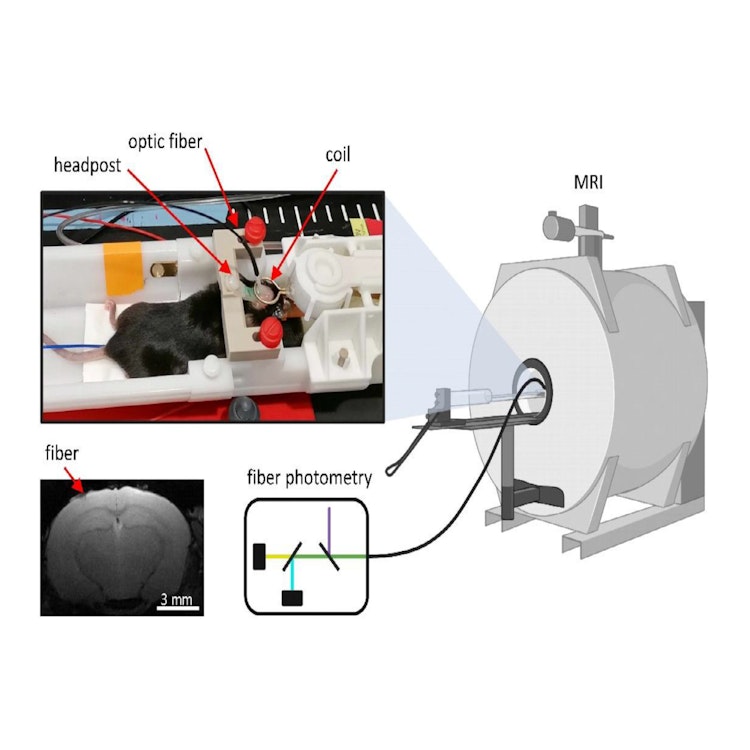
Simultaneous dynamic glucose-enhanced (DGE) MRI and fiber photometry measurements of glucose in the healthy mouse brain
Glucose is the main energy source in the brain and its regulated uptake and utilization are important biomarkers of pathological brain function. Glucose Chemical Exchange Saturation Transfer (GlucoCEST) and its time-resolved version Dynamic Glucose-Enhanced MRI (DGE) are promising approaches to monitor glucose and detect tumors, since they are radioactivity-free, do not require 13 C labeling and are is easily translatable to the clinics. The main principle of DGE is clear. However, what remains to be established is to which extent the signal reflects vascular, extracellular or intracellular glucose. To elucidate the compartmental contributions to the DGE signal, we coupled it with FRET-based fiber photometry of genetically encoded sensors, a technique that combines quantitative glucose readout with cellular specificity. The glucose sensor FLIIP was used with fiber photometry to measure astrocytic and neuronal glucose changes upon injection of D-glucose, 3OMG and L-glucose, in the anaesthetized murine brain. By correlating the kinetic profiles of the techniques, we demonstrate the presence of a vascular contribution to the signal, especially at early time points after injection. Furthermore, we show that, in the case of the commonly used contrast agent 3OMG, the DGE signal actually anticorrelates with the glucose concentration in neurons and astrocytes.
Download
eleftheriou_2023.pdfResearchers







